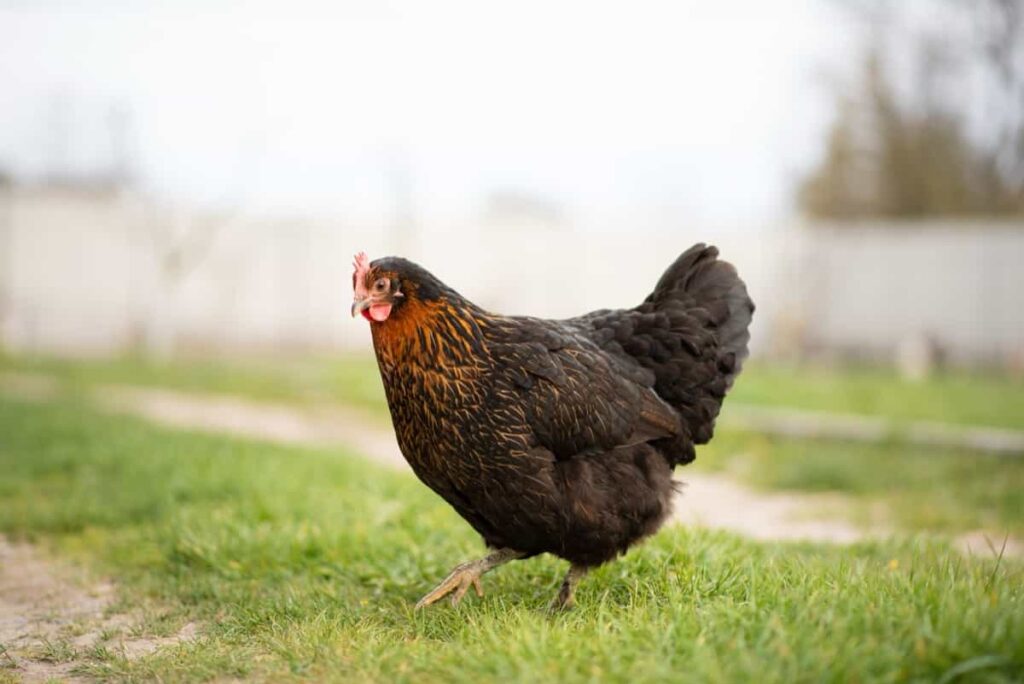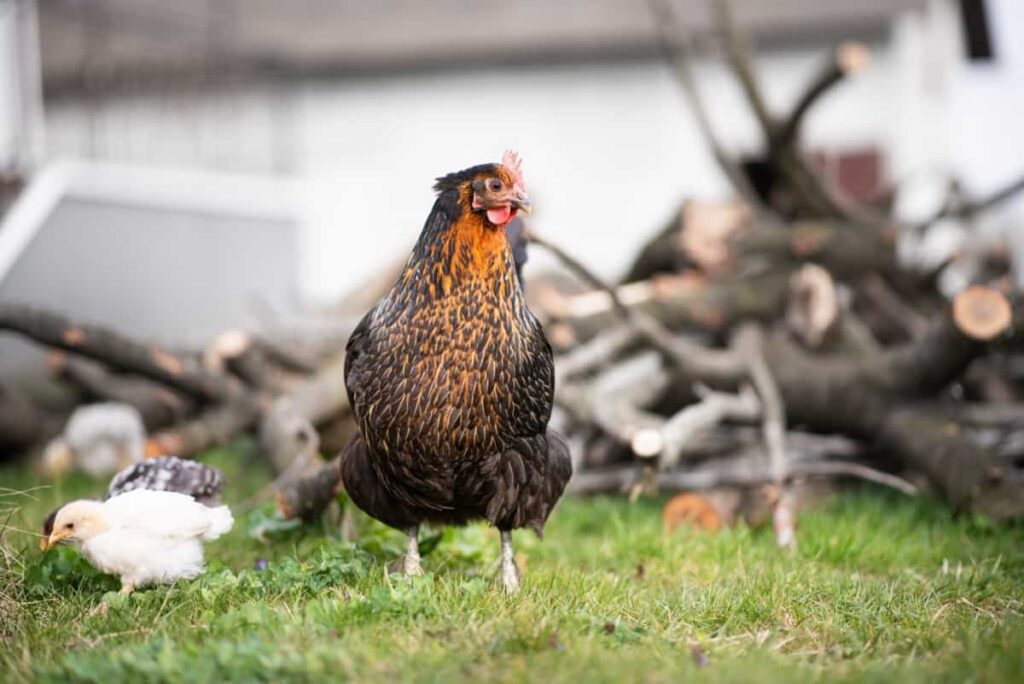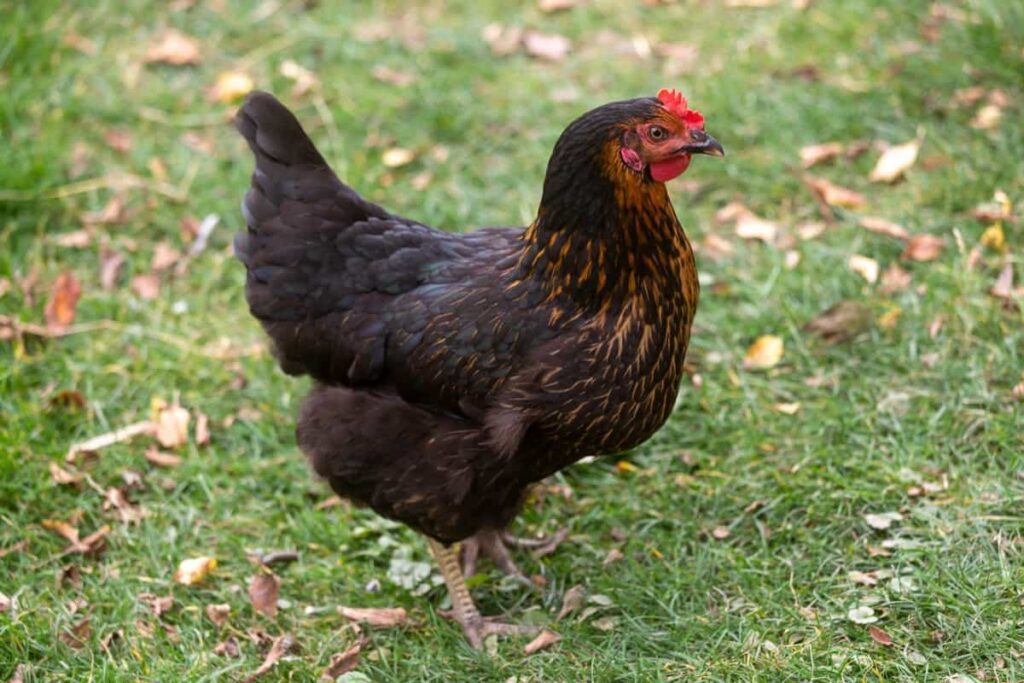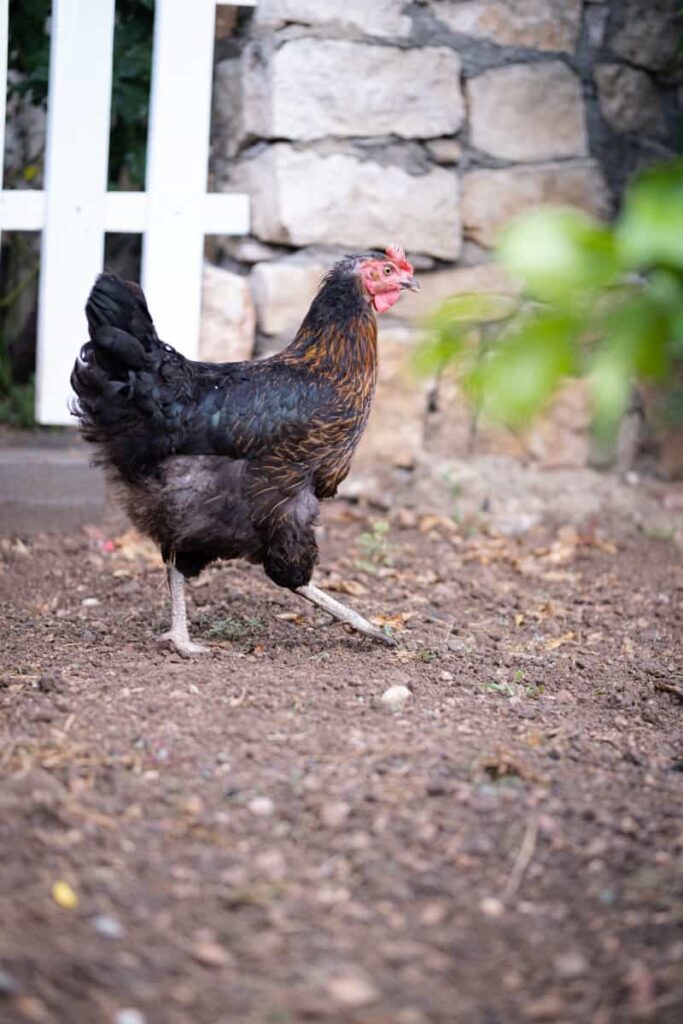Black Star chickens, known for their robust egg production and hardy nature, have become popular among poultry enthusiasts and beginners. Originating as a hybrid, these chickens are celebrated for their adaptability, making Black Star chicken care relatively straightforward and rewarding.

Raising Black Star chickens offers numerous advantages, including a steady supply of eggs, a pleasant temperament, and minimal health issues, making them an excellent addition to any backyard flock. Their diet, coop design, and brooding tips are crucial aspects of their care, ensuring their well-being and productivity. With their distinctive appearance and efficient laying rate, Black Star chickens stand out for their performance and ease of management, making them an ideal choice for those new to poultry farming.
Introduction to Black Star Chicken
Origin and Development
Black Star chickens are a hybrid breed developed from crossing two purebred chickens to combine the best traits of both parents, such as high egg production and hardiness. This development has made Black Star chickens a popular choice for their efficiency and adaptability in various environments, catering to the needs of both commercial and backyard poultry keepers.
Characteristics and Appearance
The characteristics and appearance of Black Star chickens are notable for their striking black feathers with a hint of iridescence and a star-like spot on their chest. These chickens are medium-sized, making them manageable for most poultry enthusiasts. Their robust nature and adaptability to different climates and settings make them particularly appealing to those looking for a low-maintenance breed.
Physical Features of Black Star Chickens
Size and Weight
Black Star chickens typically weigh between 5 and 8 pounds, with hens on the lighter side and roosters slightly heavier. This size range makes them perfect for various coop designs, providing enough heft for substantial egg production without excessive space.
Color Patterns and Feathering
Black Star chickens’ color patterns and feathering are distinctive, with predominantly black plumage that shines with greenish iridescence under sunlight. The feathering is dense, offering protection against the elements and contributing to their adaptability in different climates.
Temperament and Behavior
Social Dynamics
Black Star chickens exhibit a balanced social dynamic, integrating well with flocks and showing a pecking order without excessive aggression. This temperament facilitates easier management and integration with other breeds, enhancing the harmony within a mixed flock.
Interaction with Humans and Other Animals
Their interaction with humans and other animals is generally friendly and docile, making Black Star chickens suitable for families and farms with diverse animal populations. Their calm demeanor allows for easier handling and care for poultry-keeping beginners.
In case you missed it: Kadaknath Chicken Farming in India: Exploring Profitable Black Chicken Farming Business Plan

Egg Production
Egg Size and Color
Black Star chicken eggs are large and brown, providing a substantial and nutritious food source. The size and quality of their eggs make Black Star chickens particularly valuable for households and small-scale farmers looking for reliable egg producers.
Laying Rate and Age of First Egg
The laying rate of Black Star chickens is impressive, with hens capable of producing 5 to 6 eggs per week. They typically begin laying eggs at around 5 to 6 months of age, offering a quick return on investment for those raising them from chicks.
Caring for Black Star Chickens
Housing Needs and Space Requirements
Housing needs for Black Star chickens are straightforward, with each bird requiring about 2 to 3 square feet of coop space and additional space for foraging if free-ranging. Proper coop design, including ventilation, perching areas, and protection from predators, is essential for their health and productivity.
Diet and Nutrition Essentials
The best feed for Black Star chickens includes a balanced layer feed supplemented with grains, greens, and proteins to support their high laying rate. Access to clean water and occasional treats can help maintain optimal health and egg production.
Health and Wellness
Common Health Issues and Prevention
Black Star chicken health issues are relatively few, with most problems being preventable through good husbandry practices. Keeping the coop clean, providing a balanced diet, and ensuring adequate space can prevent common ailments.
Vaccination and Parasite Control
Vaccination and regular parasite control are crucial in maintaining the health of Black Star chickens. Routine checks for external parasites and adherence to a vaccination schedule can help prevent diseases and ensure the flock’s longevity.
Breeding Black Star Chickens
Understanding Hybrid Breeds
Breeding Black Star chickens involves understanding that hybrids may not consistently pass on their specific traits to offspring. This challenges breeding and often requires sourcing new stock to maintain egg production levels and other desired characteristics.
Tips for Successful Breeding
While challenging, successful breeding of Black Star chickens can be achieved with careful selection of parent stock and understanding hybrid vigor. Maintaining genetic diversity and health in the breeding stock is essential for the offspring’s vitality and the flock’s sustainability.
Raising Chicks
Setting Up a Brooder
Setting up a brooder for Black Star chick brooding tips involves creating a warm, safe environment where the chicks can grow during their first weeks. The brooder should have a heat source to maintain the right temperature, bedding to absorb moisture, reduce the risk of disease, and have enough space to prevent overcrowding. Providing feeders and waterers accessible to chicks but designed to minimize spillage and contamination is also crucial for their early development.
Growth Stages and Care Milestones
The growth stages and care milestones for Black Star chicks include monitoring their development from the brooding stage to integration into the main flock. Key milestones include feather development, transitioning from starter feed to grower feed, and gradually reducing the temperature in the brooder as they develop their feathers. Observing and adjusting care based on the chicks’ behavior and physical growth ensures they mature into healthy, productive adults.
In case you missed it: Cheapest Ways to Make Chicken Feed at Home: Explained with Ingredients for Layers and Broilers

Challenges and Solutions
Managing Stress in Flocks
Managing stress in flocks is crucial for maintaining the health and productivity of Black Star chickens. Stress can be minimized by providing a stable environment, consistent routines, and adequate space. Introducing changes gradually, maintaining a clean and comfortable coop, and ensuring the flock has access to outdoor space can also help reduce stress levels in chickens.
Dealing with Predators and Environmental Threats
Dealing with predators and environmental threats is an ongoing challenge in raising Black Star chickens. Solutions include securing the coop and running with predator-proof fencing, using guardian animals, and implementing deterrents like motion-activated lights. Environmental threats can be mitigated by providing shelter from extreme weather conditions and designing the coop and outdoor areas to protect the flock from potential hazards.
The Role of Black Star Chickens in Sustainable Farming
Advantages for Small Farms and Homesteads
Black Star chickens offer numerous advantages for small farms and homesteads, including efficient egg production, low maintenance requirements, and adaptability to various environments. Their ability to thrive on a diverse diet and contribute to pest control makes them valuable participants in a sustainable farming system, reducing the need for external inputs and enhancing farm resilience.
Contributions to Biodiversity and Eco-Friendly Practices
The contributions of Black Star chickens to biodiversity and eco-friendly practices in sustainable farming are significant. By foraging on a range of pests and weeds, they help maintain ecological balance and reduce the reliance on chemical pest controls. Their manure can be composted to improve soil fertility, closing the nutrient loop in a farm ecosystem and promoting healthier crops and pastures.
In case you missed it: Raising Ancona Chickens: A Complete Guide to Care, Breeding, and Benefits

Conclusion
Raising Black Star chickens presents a rewarding opportunity for poultry enthusiasts and farmers alike, offering a blend of high egg production, ease of care, and adaptability. These chickens meet the practical needs of egg production and flock management and contribute positively to sustainable farming practices through their low maintenance and eco-friendly roles. Embracing Black Star chickens can enhance the productivity and sustainability of small farms, homesteads, and backyard coops, making them valuable to any poultry project.
Note: The images presented in this post are intended solely for representation purposes. The images are meant to serve as visual aids and should not be relied upon as accurate representations of their real-life counterparts.
- Management Pests and Diseases in Your Cotton Field
- Sheep Farming Business Plan for Beginners
- Aquaponic Farming at Home: A Step-By-Step Guide
- Profitable Village Farming Business Ideas in 2024
- High-Yield Aquaculture: Fast-Growing Fish for Farming
- Effective Fish Pond Construction Techniques for Beginners
- Irrigation and Water Management in Pineapple Farming
- Blossom to Harvest: Mastering Flowering and Pollination in Papaya Farming
- Pig Fattening Essentials: From Selection to Sale for Beginners
